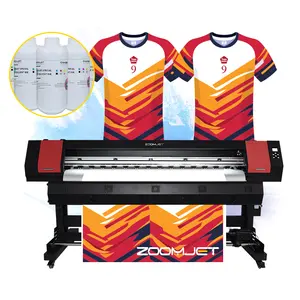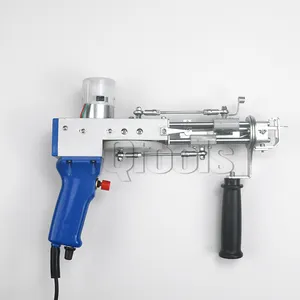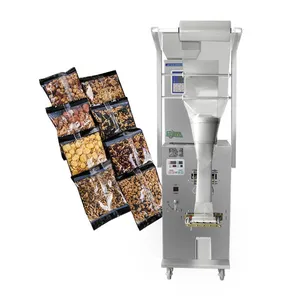Popular in your industry































































Related Searches:

















































































































Top categories
About automatic pocket sewing machine
In the ever-evolving landscape of textile manufacturing, the introduction of automatic pocket sewing machines marks a significant leap forward. These innovative devices are revolutionizing the industry by enhancing efficiency, precision, and sustainability. As we delve into the transformative impact of these machines, we'll explore how they streamline production processes, from the seamless integration of pockets into various garments to the advanced features that cater to diverse textile segments. Join us in uncovering the future of textile production, where technology meets tradition to create a more dynamic, efficient, and creative manufacturing environment.
The Evolution of Textile Production
The textile industry has stood the test of time, maintaining its significance while continuously evolving. This evolution is particularly evident in the realm of textile production, where technological advancements have played a pivotal role. The introduction of innovative manufacturing techniques has transformed traditional practices, making the process more efficient and sustainable. For instance, the progression from hand-weaving to utilizing advanced machinery has been a game-changer, paving the way for even more sophisticated methods like 3D printing.
These technological strides in textile engineering, which encompass a diverse array of material sciences, have not only enhanced the efficiency of fabric manufacturing but have also made it more environmentally friendly. The integration of disciplines such as chemistry, physics, and biology with engineering has led to the creation of textiles that are not just aesthetically pleasing but also comfortable and durable. The industry's rapid adaptation to these changes reflects a commitment to innovation, setting the stage for the introduction of equipment like automatic pocket sewing machines, which represent the next step in the industry's evolution.
Understanding Automatic Pocket Sewing Machines

Automatic pocket sewing machines represent a significant advancement in the textile industry, offering the capability to attach pockets to a variety of fabrics, including shirts, jeans, and uniforms. These machines enhance production efficiency by streamlining the pocket attachment process into a single workstation. This process encompasses pocket creasing, feeding, sewing, and automatic collection.
The machinery is designed with adjustability in mind, allowing for minimal changes in pocket templates to accommodate different pocket sizes and patterns. This flexibility ensures a broad range of applications without the need for constant reconfiguration. The user interface is engineered for ease of use, requiring minimal training for operators, which can contribute to a smoother production flow.
In terms of performance, these machines are capable of delivering a production output of up to 4-5 pockets per minute, a rate that is subject to variation based on the specific size and pattern of the pocket being attached. The integration of components such as air-cylinders and bearings, typically sourced from reputable suppliers, plays a crucial role in the consistent quality of the attachments produced.
Types of Automatic Pocket Sewing Machines on Alibaba.com
The marketplace offers a diverse range of automatic pocket sewing machines designed to cater to various production needs. The selection includes industrial-grade machines with significant production capacity, as well as models tailored for small businesses, emphasizing the versatility of machines that can handle different scales of operation.
For specialized textile production, there are machines that represent the latest in glove knitting technology, showcasing the industry's move towards more niche automatic sewing solutions. Additionally, there are machines specifically designed for jeans, highlighting the sector's focus on customization for garment-specific manufacturing.
In the realm of personalization and precision, some machines integrate laser technology for pocket welting, and others include laser cutters for welting and placket setting, reflecting the advanced features that modern automatic sewing machines possess. These innovations are not just limited to heavy-duty machines; portable and miniaturized versions also benefit from technological advancements, offering convenience without compromising on functionality.
Key Features and Innovations

The realm of advanced sewing machines introduces a plethora of features designed to enhance precision and efficiency. One such indispensable feature is the Needle Up/Down function, which ensures the needle's position is either up or down when the seam ends, facilitating perfect pivots and intricate appliqué work. Another innovation is the Locking Stitch Button, which eliminates the need for back-tacking at the start and end of a seam, particularly beneficial when working with decorative stitches.
For ease of use, the One-Hand Needle Threader is a time-saving addition, allowing for quick and easy threading of the needle, while the One-Step Sensor Buttonhole feature automates the creation of buttonholes to fit the specific button in use, ensuring consistency and precision. The Knee Lift lever is another ergonomic feature that enables hands-free raising and lowering of the presser foot, complementing the Needle Up/Down function for managing large fabrics or detailed work.
Advanced machines may also include an Automatic Thread Cutter, which can be programmed to snip threads at the end of a stitch, streamlining the sewing process. The Speed Control Slider offers the ability to adjust sewing speed on the fly, catering to both intricate work and rapid, long seams. Adjustable Foot Pressure allows for customization according to fabric type, and Auto Tension systems, available on computerized models, automatically adjust tension according to fabric thickness or stitch type, though manual adjustments may sometimes be necessary.
Materials and Design Considerations
In the realm of textile production, the choice of materials for machinery components is critical, especially for specialized equipment like automatic pocket sewing machines. Light alloys, such as aluminum, magnesium, titanium, and beryllium, are commonly selected for their advantageous properties. These materials are known for their low density, high ductility, and excellent strength-to-weight ratio, which contribute to the machinery's performance and durability.
Aluminum stands out as the most prevalent light alloy in textile machinery due to its abundance, cost-effectiveness, and ease of fabrication. Its good electrical and thermal conductivity, coupled with its ductility, makes it a prime choice for manufacturing components. However, these light alloys are inherently susceptible to wear and chemical corrosion, challenges that are amplified in the high-volume, high-temperature conditions of textile manufacturing.
To counter these vulnerabilities, surface coatings are applied to enhance the durability and longevity of the components. These coatings are designed to provide resistance to abrasion and chemical degradation, ensuring that the machinery can withstand the rigorous demands of textile production.
Applications in Different Textile Segments

The applications of automatic pocket sewing machines span across various segments of the textile industry. These machines are integral in the production of mattresses, auto interiors, apparel, and furniture, showcasing their versatility. In the mattress manufacturing sector, these machines contribute to the precision and efficiency required for high-volume production. For auto interiors, the demand for consistent quality and durability is met with the advanced capabilities of automatic sewing technology. Apparel manufacturing benefits from the speed and reliability of these machines, which are capable of handling a range of fabrics and designs. Furniture production also sees an enhancement in productivity and craftsmanship with the use of these specialized sewing machines. The adaptability of automatic pocket sewing machines to different materials and requirements makes them a valuable asset in the diverse field of textile manufacturing.
Advantages of Upgrading to Automatic Systems
Upgrading to an automatic pocket sewing machine offers significant benefits for those in the textile industry. The automation features of these machines are a major advantage, allowing for high-speed, precision crafting without the constant manual oversight required by traditional machines. Once the machine is set up with the desired thread and settings, it can operate independently, which greatly enhances productivity.
The ability to save patterns and stitches is another key advantage. For repetitive tasks, this feature saves a considerable amount of time, enabling a more efficient workflow and the ability to handle larger volumes of work. This efficiency is not just in terms of time but also in the consistency of the output, which is crucial for maintaining quality in textile production.
Connectivity is a modern feature of these machines that cannot be overlooked. The integration with smart devices and PCs means that designs can be created or modified digitally and then directly applied to the machine. This connectivity opens up a realm of creative possibilities and allows for the easy implementation of complex designs, which is particularly beneficial for custom embroidery work.
Lastly, the precise speed control offered by automatic machines ensures consistent stitching at the desired pace, eliminating the inconsistencies often introduced by manual speed adjustments. This level of control is essential for fine and detailed work where precision is paramount. Overall, the transition to an automatic system is a transformative step for textile producers looking to enhance their capabilities and efficiency.
Integration with Existing Production Lines
Our automation solutions are adept at integrating with existing manufacturing infrastructures, enabling businesses to introduce automation into their operations smoothly. This integration is crucial for companies looking to adopt advanced technologies like automatic pocket sewing machines without disrupting their established production workflows. The systems are designed to be compatible with current processes, ensuring a seamless transition to more automated methods. Furthermore, the scalability of our technology allows for adjustments and expansions as business needs grow, ensuring that the investment in automation remains relevant and effective over time. This approach minimizes the risk and maximizes the efficiency of implementing new automated solutions in textile production.
Conclusion
The advent of automatic pocket sewing machines has ushered in a new era for the textile industry, characterized by speed, precision, and versatility. These machines have proven to be a boon across various textile segments, improving the quality and efficiency of products ranging from apparel to auto interiors. With features like the Needle Up/Down function, One-Step Sensor Buttonhole, and Automatic Thread Cutter, these machines offer unparalleled precision and ease of use. The integration of smart materials and design considerations ensures durability and performance, while the ability to integrate seamlessly with existing production lines minimizes disruption and maximizes return on investment. As we've seen, the transition to automatic systems is not just an upgrade; it's a transformative step that propels textile manufacturing into a future where innovation is woven into every stitch. For industry players, embracing these advancements is not just about keeping pace—it's about setting the pace for a more efficient, creative, and sustainable production landscape.





































































